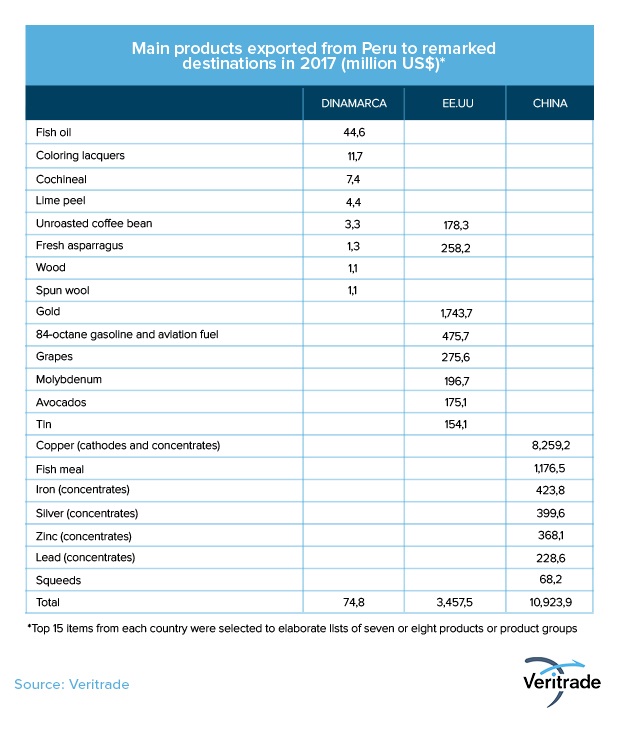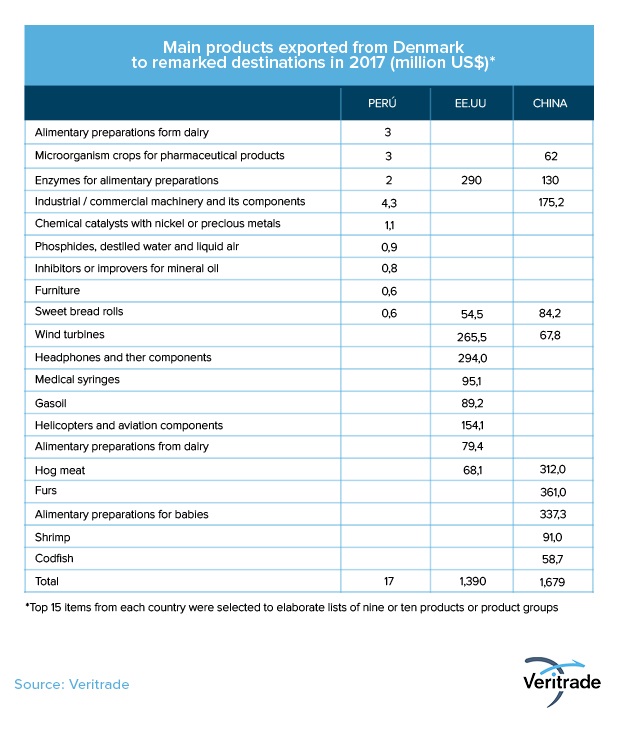Peru - Denmark: more than two World Cup rivals
Published on 05 June 2018
Both countries premiere their FIFA World Cup with a match on June 16. Regarding this, we review its export offer and the main products that matter...
Peru and Denmark are separated by 10,535 kilometers, but they are joined by a policy of trade liberalization that has allowed them to expand their development. As a good republic of the North Sea and the Baltic, the Kingdom of Denmark is a point of passage of merchandise, either for its redistribution or transformation, and a historical reference of openness. For its part, Peru suddenly managed to dynamize its international trade at the end of the first decade of the 21st century and the beginning of the second, with the signing of a series of free trade agreements that now cover more than 97% of its bilateral movement.
At this point, the two economies will face each other in the arena of Morrovia Arena de Saransk, but they are complementary in their exports. Next, we review the lists of the main products sent from both countries to the other, as well as to the United States and China. Then, we will do the same with imports.

Undoubtedly, Denmark is the example of a niche market for agricultural and fishery products, as well as non-traditional ones. Although the export values are not very high, the food, pharmaceutical, biotechnology, design and textile industries of the Nordic kingdom provide opportunities for companies that hire a large amount of labor in processing plants and the field in Peru. .
Now let's review the Danish exports:

The Danish export offer also shares the characteristic of being a niche origin, although with a greater degree of specialization in the pharmaceutical, biotechnological and chemical industries. The shipment of enzymes, catalysts, phosphides and inhibitors highlights the competitive advantage of Danes in these areas, in which they have also positioned themselves in the main markets of the world, such as China and the United States. But high technology also stands out in the development of the aeronautical industry and industrial machinery, as can be seen in the table.
Additionally, there are two sectors that can be considered traditional in the Nordic countries and that have a high presence in the world: food (especially dairy or livestock) and furniture.
In general, the offer of both countries is complementary. Commercially, the scoreboard is bulky and seems to favor Peru, but ends in a draw for both teams: the Peruvian goals in raw materials are compensated by Denmark in intermediate goods, dairy products, pharmaceuticals and biotechnology, as well as specialized machinery . Whatever happens inside the court, there is a clear motivation to maintain the cordiality between both countries.
For more information on business statistics, you can check the Veritrade portal.
Request your test here: https://bit.ly/2sxC2kQ